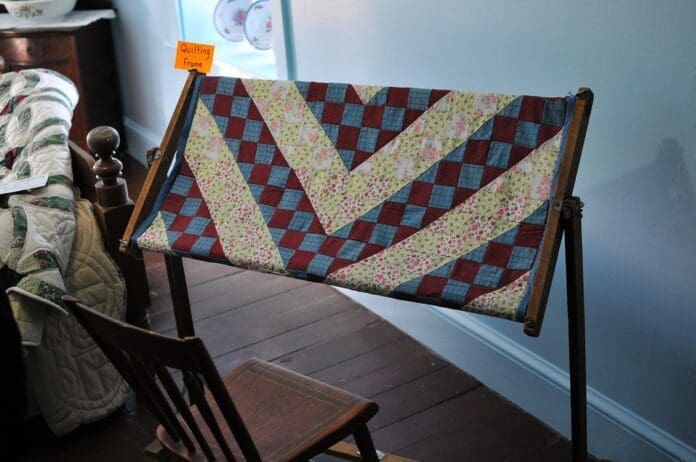I’ve been in my head a lot over the past couple of days, thinking about how my childhood fits into my future.
I spent a couple of hours on Zoom with a group of Appalachians the other day. The regional dialects and expressions were a balm to me.
Following that, I was in a conversation that was centered around quilts, and that conversation brought such strong memories back to me that I can’t stop thinking about it.
Quilts are a huge part of my childhood memories. I remember them being folded and stacked in my gram’s “press,” her closet, and on beds. I remember the reds, blues, and the white material. I remember spending hours watching my mom and grandma cut granny squares and couldn’t wait until I was old enough to help. Shopping for material was so much fun for me, matching colors and prints, designing the squares as you walked through the bolts.
I remember one winter, my pop and gram stayed with us for a part of the winter. We set up the quilting frames in the sunroom. They stretched from wall to wall, and we placed folding chairs around them. We pieced together a quilt all winter, each of us taking turns, even pop. When there was nothing else to do, we would meander in and out of the room, quilting. There was no rush, really, although gram only quilted in the winter because it was too hot in the summer and “it was too hot to ‘waller’ an old quilt.”
I can remember tying pieces of orange yarn into the middle of the quilt squares. I was probably allowed to do that because not much could go wrong while tying a knot in a piece of yarn. Sometimes the patterns were more difficult. I used to know the pattern of a lot of quilts by looking at them, but it’s been so many years that I can barely remember the names, let alone what they looked like. I have a beautiful quilt stored away, never used, because it is far too pretty for everyday use. It’s my most favorite keepsake from gram.
A quick Google search told me that our ancestors brought quilting with them to America, and, much like Appalachian music, the origins are Scottish, Irish, and German. Like a lot of us today, there simply wasn’t wiggle room enough to waste things and resources. Money wasn’t spent shopping for clothes in department stores; families provided their own needs with their own hands. I spent a lot of time in my youngest years in clothes that were made by my mom. I can still remember the itchy polyester of a short set I had.
My mom tells stories of my gram using the leftover fabric from clothes to make quilts. Nothing went to waste. Quilts were an integral part of our lives. If you were cold, you threw another quilt on the bed. They were also made as gifts. There were baby quilts and wedding quilts, made to last and made by the love of someone’s hands.
I want to bring parts of my childhood into my aging life. I want to grow my own food and remember how to can food like pickled beans and green tomato ketchup. I can remember one week spent in the kitchen, peeling and coring apples so they could be cooked and preserved and made into applesauce. Fruit trees grew at the edge of her garden where we would collect peaches.
There are a couple of reasons why this is so appealing to me.
First of all, we know what goes into what we grow. I know that my gram’s way of eating is what preserved her and my pop well into their 90s. One of her favorite snacks was diced tomatoes with hot bacon grease poured over them. She didn’t always eat the healthiest, but there weren’t antibiotics or preservatives in it. And let’s face it, there’s nothing like a cucumber fresh off the vine with the dirt wiped off on your shirttail.
The other reason this life appeals to me is that I miss the days when we weren’t seen as victims of broken systems. There was a struggle, a lot more difficult than today’s, but there was also this way of handling things without wanting to be rescued. Our ancestors relied on themselves and their wiles. And there were leaders who were trusted and understood the struggles and sought to encourage us. They helped instill hope.
I long to create a space where we learn and grow together; a space where we realize that we have the tools we need to rebuild our lives. After all, we’re Appalachian. Resilience is stitched into our DNA by the hands of our ancestors.
Onward,
Amy Jo


